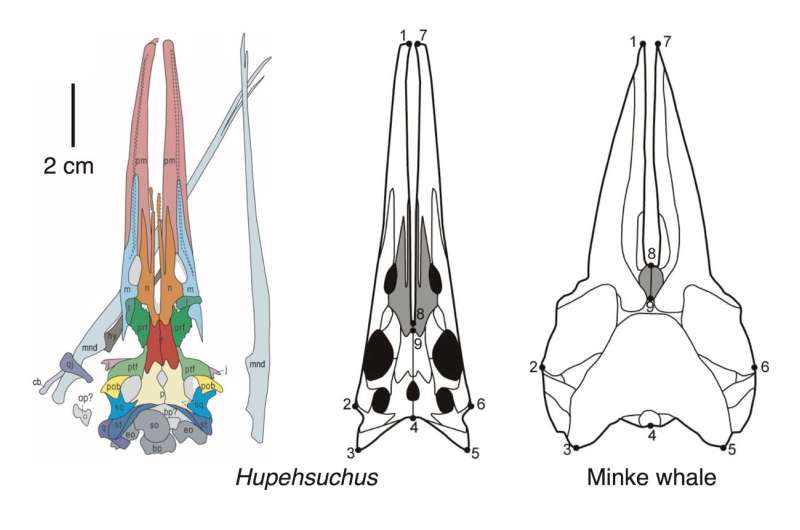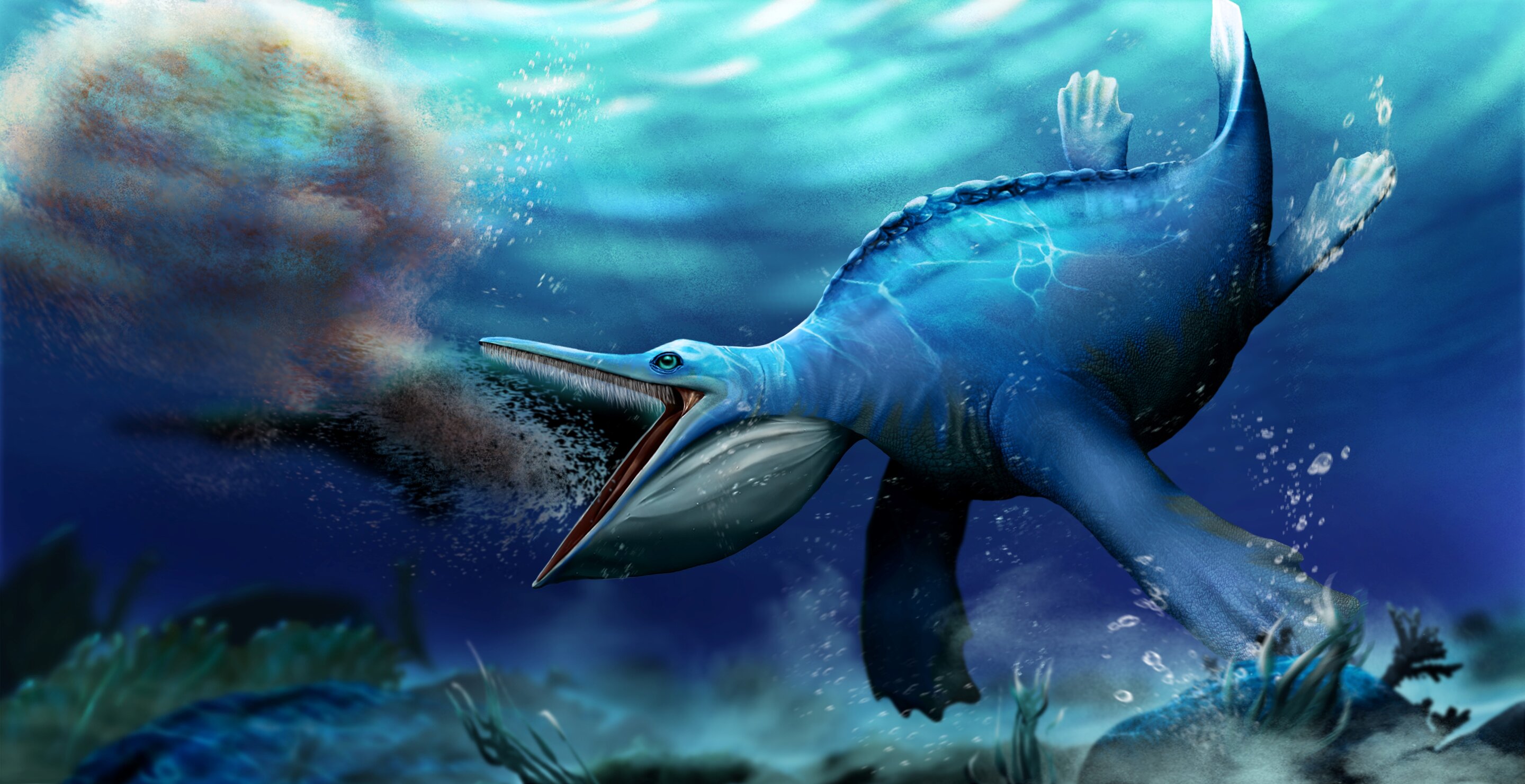A fascinating new fossil discovery in China has unveiled the early use of whale-like filter feeding by a group of reptiles existing 250 million years ago. This groundbreaking research sheds light on the unique characteristics of the Hupehsuchus, a prehistoric marine reptile that possessed soft structures enabling it to engulf large quantities of water containing shrimp-like prey, and had baleen whale-like structures to filter food while swimming. The findings reinforce the idea of the rapid re-population of the oceans after the mass extinction event that occurred three million years earlier.
The team of researchers, hailing from China and the UK, made this discovery by closely examining the skull of the Hupehsuchus. They discovered grooves and notches along the edges of the jaws, similar to those found in baleen whales, suggesting that the reptile had keratin strips instead of teeth. This adaptation was an unexpected revelation for the team. According to Zichen Fang, who led the research at the Wuhan Center of China Geological Survey, “The hupehsuchians were a unique group in China, close relatives of the ichthyosaurs, and known for 50 years, but their mode of life was not fully understood.”
Professor Michael Benton from the University of Bristol’s School of Earth Sciences, another collaborator in the study, highlighted the significance of this discovery, stating that “This was a time of turmoil, only three million years after the huge end-Permian mass extinction which had wiped out most of life. It’s been amazing to discover how fast these large marine reptiles came on the scene and entirely changed marine ecosystems of the time.”

According to Professor Long Cheng, also from the Wuhan Center of China Geological Survey, who directed the project, “We discovered two new hupehsuchian skulls. These were more complete than earlier finds and showed that the long snout was composed of unfused, straplike bones, with a long space between them running the length of the snout. This construction is only seen otherwise in modern baleen whales where the loose structure of the snout and lower jaws allows them to support a huge throat region that balloons out enormously as they swim forward, engulfing small prey.”
Li Tian, a collaborator from the University of Geosciences Wuhan, added, “The other clue came in the teeth… or the absence of teeth. Modern baleen whales have no teeth, unlike the toothed whales such as dolphins and orcas. Baleen whales have grooves along the jaws to support curtains of baleen, long thin strips of keratin, the protein that makes hair, feathers and fingernails. Hupehsuchus had just the same grooves and notches along the edges of its jaws, and we suggest it had independently evolved into some form of baleen.”
The groundbreaking research, highlighting the parallels between Hupehsuchus and baleen whales, was recently published in the scientific journal Ecology and Evolution.
More information:Zichen Fang et al, First filter feeding in the Early Triassic: cranial morphological convergence between Hupehsuchus and baleen whales, Ecology and Evolution (2023).
Citation: Whale like filter-feeding discovered in prehistoric marine reptile (2023, August 7) retrieved 7 August 2023 from https://phys.org/news/2023-08-whale-filter-feeding-prehistoric-marine-reptile.html
This document is subject to copyright. Apart from any fair dealing for the purpose of private study or research, no part may be reproduced without the written permission. The content is provided for information purposes only.
Denial of responsibility! SamacharCentrl is an automatic aggregator of Global media. In each content, the hyperlink to the primary source is specified. All trademarks belong to their rightful owners, and all materials to their authors. For any complaint, please reach us at – [email protected]. We will take necessary action within 24 hours.

Shambhu Kumar is a science communicator, making complex scientific topics accessible to all. His articles explore breakthroughs in various scientific disciplines, from space exploration to cutting-edge research.


